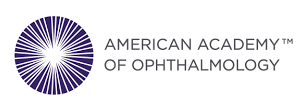Challenge: Focus group research showed that the majority of the members of the American Academy of Ophthalmology (the Academy) joined the organization for representation before Congress, regulators and the executive branches of government. The same data showed that members did not believe that their Academy was doing a good job representing them. The reality was that there were many successes in Washington, but they were not being effectively communicated. Savvy Academy leaders knew that this misperception could lead to a loss of members and revenues if left uncorrected.
Action: Develop a comprehensive strategic communications plan incorporating a variety of tactics to support the objectives and demonstrate to ophthalmologists that the Academy is leading the fight for them in Washington.
Tactics:
- Communications Audit. The audit showed the need for the current communication vehicles to be revised and the articles written in laymen’s terms. New internal communications vehicles were also developed and focused on the Academy’s work on issues of importance to ophthalmology. A larger Washington presence was carved out of the Academy’s monthly magazine, website and other vehicles of communication.
- Trade Press. A targeted trade press media strategy was developed so members could read about Academy success in third-party credible sources. This coverage also helped to position the Academy as the first source of information for the press on any issues related to ophthalmology.
- Annual Meeting Marketing. A marketing campaign was developed which included an exhibit for the Annual Meeting highlighting the good work going on in Washington. “Meet the Experts” sessions were advertised, where Academy experts on the various issues in Washington would be at the booth and available to answer member questions. A series of ads were developed and ran in the Academy magazine that highlighted the sessions available where ophthalmologists could learn more about what their Academy was doing for them in Washington. Digital color postcards were developed and emailed to target audiences within the membership about special sessions at the meeting on topics related to DC. This information was carried in all Academy communication vehicles.
- Expanded OPHTHPAC Presence. A marketing campaign for the Academy’s PAC was developed and included marketing for Advocacy Day, (lobby day), development of a new donor recognition program and new marketing collateral.
Results: Follow-up focus group research showed that perceptions had indeed changed after implementation of the strategic communications plan and members were much more aware of the successes in Washington. Media coverage improved dramatically, with 95 percent coverage of stories in targeted publications. Attendance increased 20 percent at the PAC’s lobby day and donations also were buoyed by the plan.

